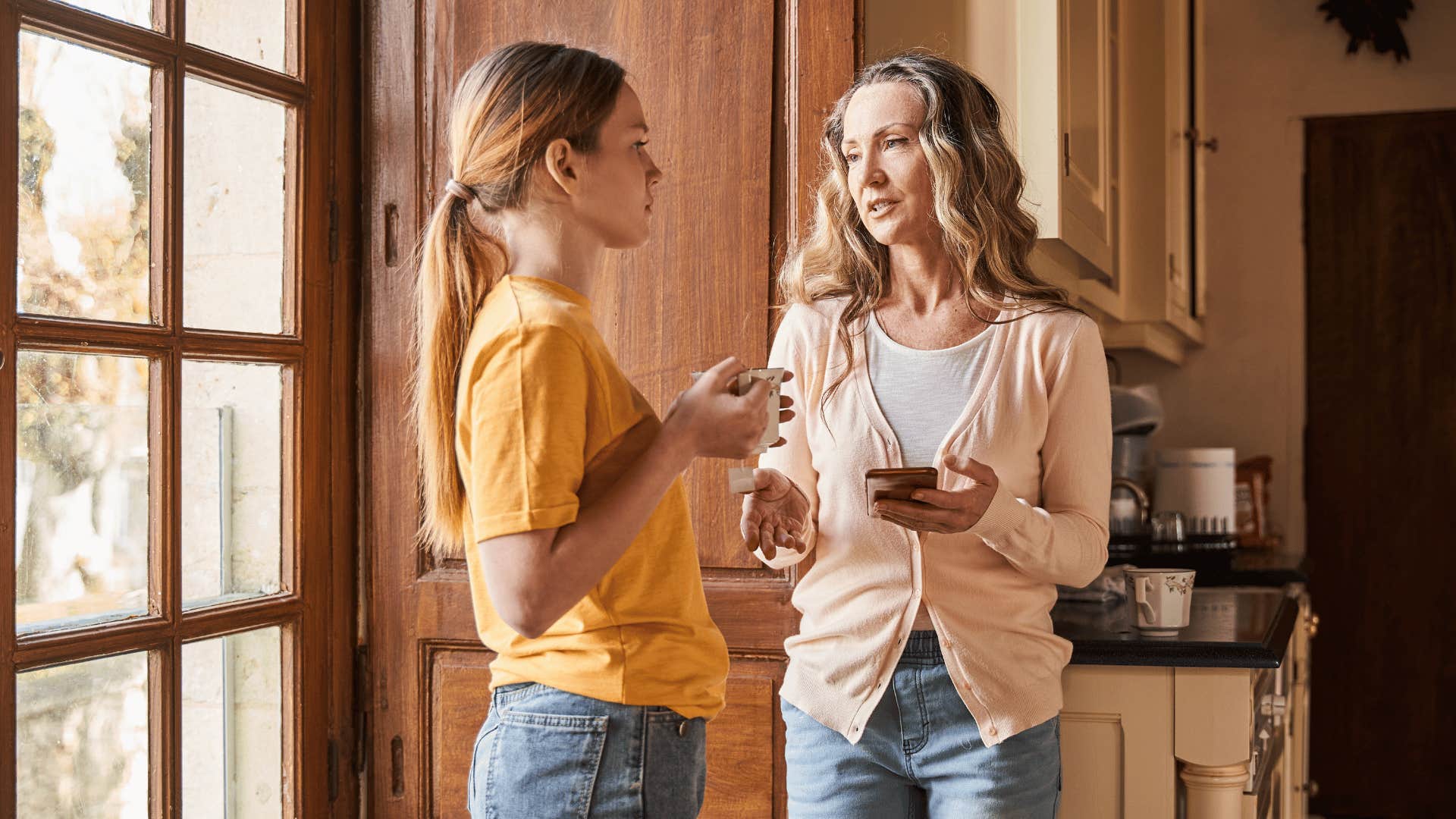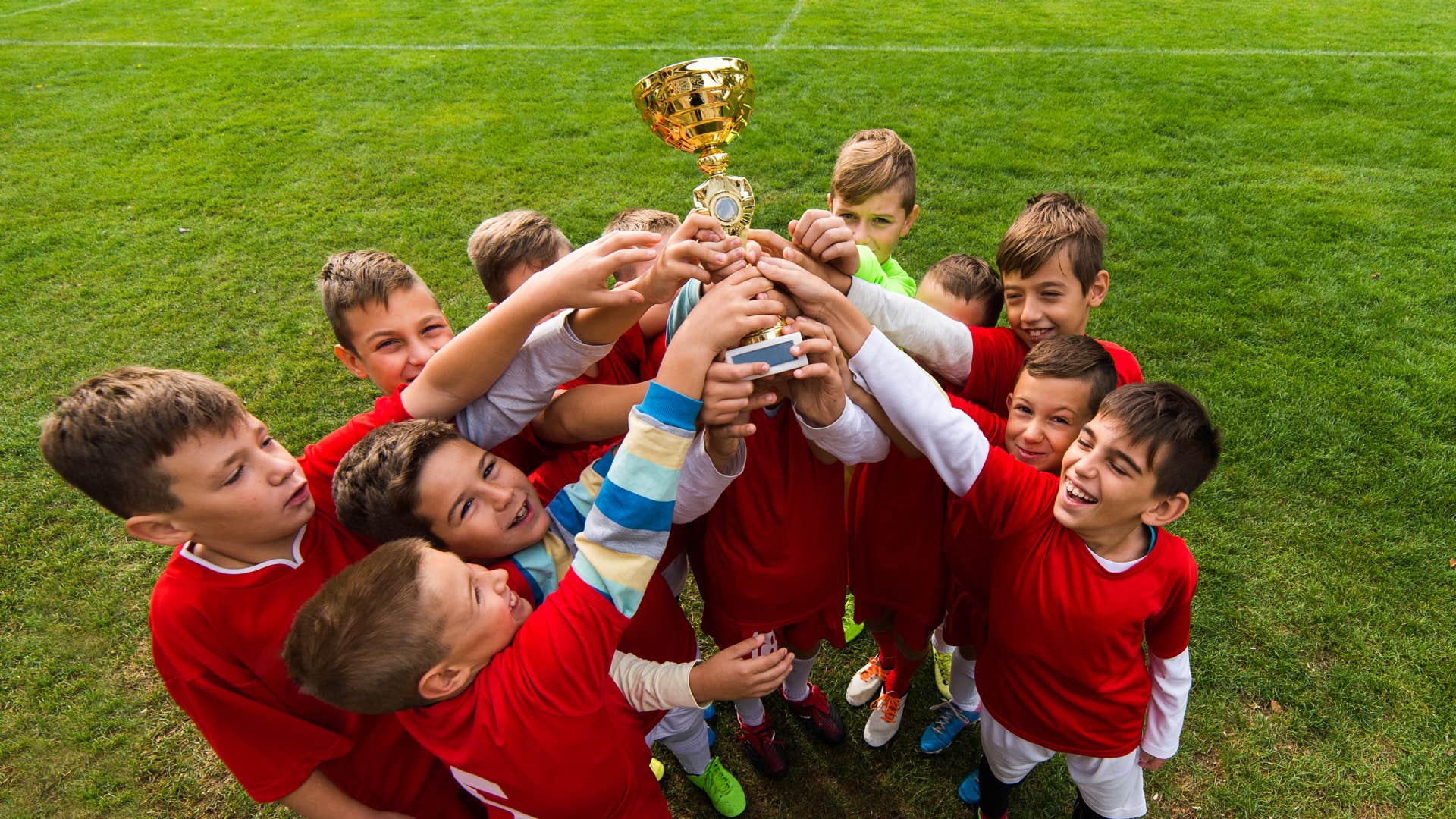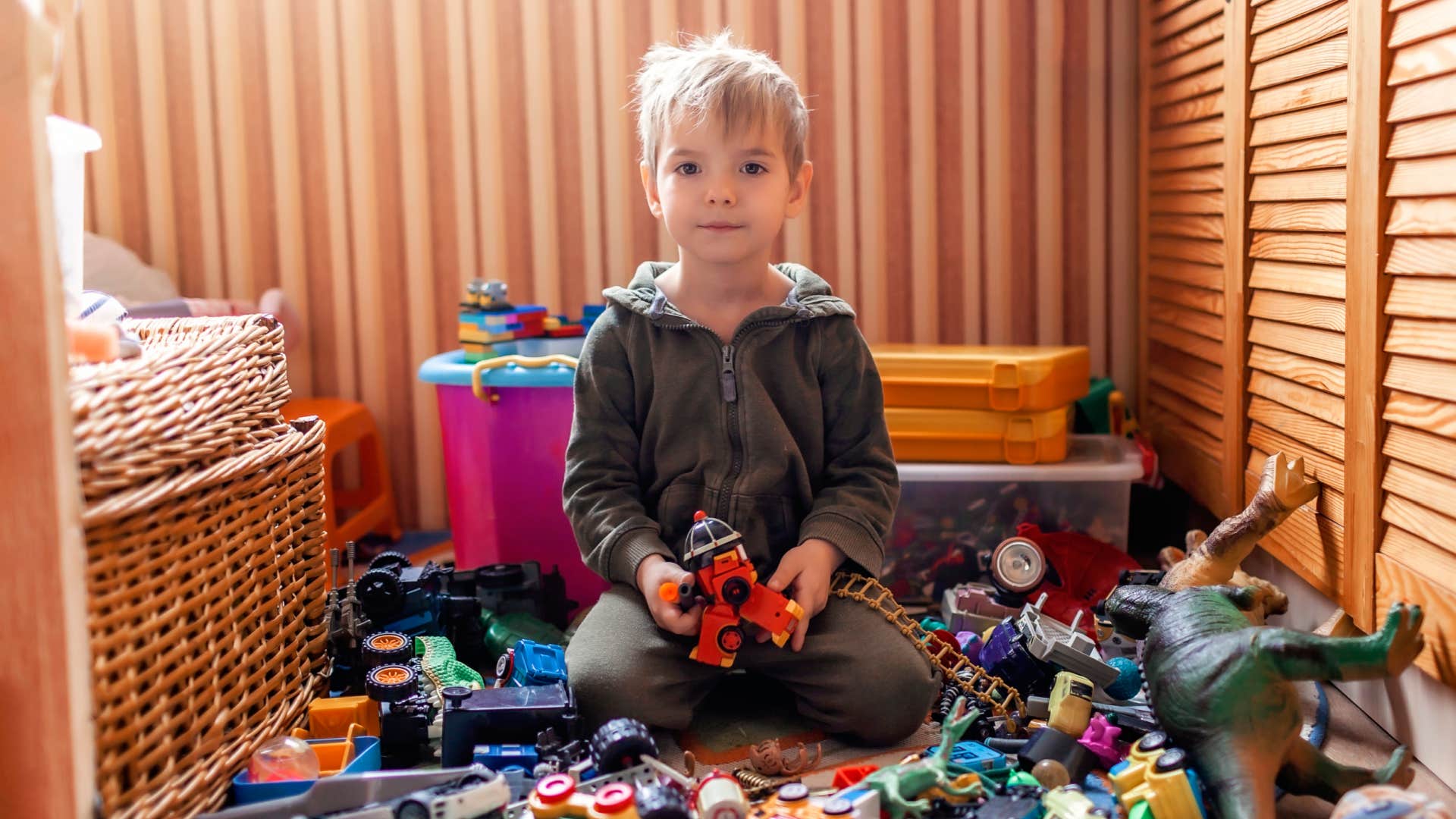8 Sad Ways Childhood Was Never The Same After The 1980s
The world is always changing, but the 80s were a time of particularly major shifts in parenting.
 Shutterstock / Lyudmila2509
Shutterstock / Lyudmila2509 When people of older generations point fingers at Gen Z for what they see as a lack of work ethic, sense of entitlement, or inability to be self-sufficient, they're likely overlooking the fact that in many ways, childhood was never the same after the 1980s. Many of the major changes in parenting, schooling and the world in general since those golden days have had a lasting impact on just about every aspect of Gen Z's lives.
Research shows that this is far from the first time in history that older generations have complained about youngsters, but that doesn't mean there isn't some truth to what they are say. However, it's not all young people's fault. Doing things like putting kids on high alert for stranger danger or revving up the pressure to be super high achievers had some not-so-great consequences younger generations can't help but be shaped by.
Here are the eight ways childhood was never the same after the 1980s
1. Fears of 'Stranger Danger' took hold
 Olena Yakobchuk | Shutterstuck
Olena Yakobchuk | Shutterstuck
One sad way childhood was never the same after the 1980s was a heightened sense of paranoia caused by the stranger-danger phenomena. Beginning in the late 1970s, there was an increase in public awareness about, and subsequently increased fear of, random kidnappings of children.
The widely reported on abduction of Adam Walsh in 1981 made a huge buzz, and when Adam, the movie based on his story, was released in 1983, parents everywhere became terrified that their child might suffer the same fate. The next thing everyone knew kids everywhere were sitting down to breakfast with milk cartoons covered in pictures of missing kids, being warned to always be on the look out for stranger danger.
Though this was all done with good intentions, it led both parents and kids to feel unnecessarily anxious and paranoid about the dangers of the world. As it turns out, less than 1% of child abductions in the US are committed by strangers. In 2017, The National Center for Missing and Exploited Children asked parents to stop using the phrase.
2. Parents started to plan overly-structured playdates
 Shutterstock / Monkey Business Images
Shutterstock / Monkey Business Images
Another sad way childhood was never the same after the 1980s is that parents began to plan structured playdates for their children. Author and motivational speaker Julie Lythcott-Haims notes that when the playdate was born in 1980s, not only did parents schedule meet ups for their kiddos, but they began to hover over them, micromanaging their play time.
At first, this might not sound like a problem. Ensuring your children have lots of social interaction outside of school is generally a good thing, adults being too hands on in children's social lives robs them of opportunities to learn important life skills.
"Play, to me and to most play researchers, is something that children do themselves. It's not something that is organized by an adult," says Peter Gray, PhD, a research professor at Boston College. "[C]hildren decide what they're going to do and control what they're going to do and solve the problems as they're doing it. That's how children develop the kinds of character traits that allow them to ultimately become independent adults."
3. The self-esteem movement started granting ribbons and trophies to everyone
 Shutterstock / Fotokostic
Shutterstock / Fotokostic
The self-esteem movement started with the best of intentions. Parents and teachers wanted all children to know they are special and worthy.
That desire was based on the passion project of California state legislator John Vasconcellos, who decided that since research showed that low-esteem was tied to maladaptive behaviors, raising children's self-esteem must have the beneficial effects. Based on this assumption, he launched a task force that over the next few decades gave rise to what became a $10 billion a year industry.
As it turns out, the assumptions made by Vasconcellos didn't hold true. Whereas he had believed increasing self-esteem would reduce crime, teen pregnancy, and a variety of other societal problems, in reality, notes Jesse Singal in an article for The Cut, "In some areas, high self-esteem actually correlated with worse behavior — some criminals, it turns out, actually view themselves quite favorably."
In fact, one study published in the International Journal of Psychology and Educational Studies found that students who are rewarded for simply completing a task might only be doing it for the reward rather than because they're genuinely interested in it. They found that this can lead to a decrease in motivation, as students lose interest when the reward is no longer available.
4. Parents began heavily pressuring their children to achieve academic greatness
 Shutterstock / Olimpik
Shutterstock / Olimpik
During Ronald Reagan's presidency in 1983, the National Commission on Excellence in Education presented the Nation at Risk report, which, in essence, claimed that the education system was severely lacking and that other countries were taking the lead, and "called for elected officials, educators, parents, and students to reform a public school system it described as 'in urgent need of improvement.'”
In response to the report, the commission offered 38 recommendations, including rigorous and measurable standards, higher expectations for student performance and conduct, raised admissions standards for institutions of higher educations meant "to push students to do their best during their elementary and secondary years," as well as 7-hour school days and a 200- to 220-day school year.
While some of the changes implemented were positive, there have been plenty of negatives that changes childhood forever.
"If there's a bottom line, it's that we're spending twice as much money on education as we did in '83 and the results haven't changed all that much" says William Bennett, who served as Reagan's second-term education secretary.
What has changed is levels of anxiety among students. Surveys show levels of academic stress among students of all ages have been steadily on the rise and show no signs of lowering.
5. Children became glued to video games
 Pixel-Shot | Shutterstock
Pixel-Shot | Shutterstock
With notable games like Super Mario Bros. making waves — and the ability to play them at home becoming more affordable and popular — it isn't surprising that kids became more and more glued to the rush these games provide.
This innocent joy has now turned into a major problem with young kids. Daniel Alanko, MD, notes as of 2023, "90% of children older than 2 years play video games, and three-quarters of American households own a video game console." He adds that "Children 8 to 17 years of age spend an average of 1.5 to 2 hours daily playing video games.that right now kids eight through 17 spend an average of one and a half to two hours playing video games a day."
Not only that, but the rise of video game consumption also gave rise to screen time consumption. The American Academy of Child & Adolescent Psychiatry (AACAP) states that kids aged eight to 12 spend four to six hours each day on their screens, while for teens that number rises to up to nine hours a day. They warn that constant screen time might lead to a number of issues, including sleep problems, lower grades, reading less, mood and weight problems, and more if parents can't get a firm grip on their kid's screen time.
6. Children’s toy boxes began to overflow
 Shutterstock / Maria Symchych
Shutterstock / Maria Symchych
Sitting in front of the TV most children remember those funky ads that would appear during commercial breaks. The ads were colorful and featured fun toys that would guarantee endless amounts of entertainment and joy. Unfortunately, these commercials began to take precedence over actual play and creativity.
Back in the day, children had limited toys and spent their time engaging with the world around them. Picking up sticks, these children were happy to "sword fight" with their friends for hours on end.
That ability to use pure creativity and imagination has long been lost. Now, parents will spend hundreds of dollars on toys from ads hoping their kids will finally have enough toys to satisfy them.
What these parents fail to realize is that kids really need to connect with nature and people. Research shows that having fewer toys promotes more peaceful, deeper, and meaningful play. Though simple, the ability for kids to use creativity and form meaningful connections is the best way for kids to develop and grow.
7. Child safety measures led parents to want to 'bubble wrap' their kids
 DimaBerlin | Shutterstock
DimaBerlin | Shutterstock
Before the 1980s, parents would load their kids in the car and go for a ride without giving a second thought to putting on their seat belts. By 1985, all 50 states had enacted laws requiring them to do so. Shortly after that, states and localities began implementing laws requiring kids to wear safety helmets while riding a bicycle.
Both of these safety measures have saved a tremendous number of lives. An unintended consequence of this, however, is the increased belief on the part of parents that they can and should somehow "bubble wrap" their kids and keep them safe from anything and everything that might harm them.
Doing this denies children of what is known as "the dignity of risk."
Anita Bundy, a professor and head of the Department of Occupational Therapy in the College of Health and Human Sciences, says, “When we perpetually do things for others that they are fully capable of doing for themselves, or continually say, ‘You can’t,’ we give the message, ‘You are not capable.’ Sooner or later those individuals believe us. Is that the message you want to give?”
8. Adults became obsessed with children's weight
 Prostock-studio | Shutterstock
Prostock-studio | Shutterstock
The 1980s saw the launch of a fitness and nutrition craze, which followed the identification of what became known as the obesity epidemic, the sharp rise in rates of obesity among Americans of all ages.
Heightened concerns about obesity put increased peer pressure on overweight kids and teens. One study conducted in 1980 found that an obese teen girl could offer an acceptable explanation for her size, she was less liked and given less of a positive evaluation than her peers.
Multiple researchers now claim that, "By exaggerating the risks of fat and the feasibility of weight loss ... the Centers for Disease Control and Prevention, the U.S. Department of Health and Human Services and the World Health Organization inadvertently perpetuate stigma, encourage unbalanced diets and, perhaps, even exacerbate weight gain."
Marielisa Reyes is a writer with a bachelor's degree in psychology who covers self-help, relationships, career, family, and astrology topics.

